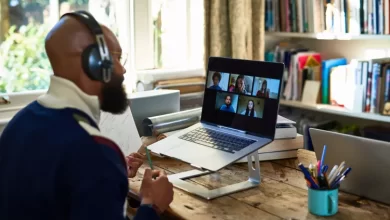AI, Cybersecurity and Telework

Pandemic covid 19 has had a tremendous impact on everyone’s daily life. Lockdowns have changed the rythm of life, the way companies are organized and the way they communicate. Telework has become normalized and is even now the standard for certain activities. In fact, companies have realised that teleworking and digital exploitation can be a lever to increase their productivity. Democratization of telework is also a key opportunity for developing countries. Employees from these countries can now work internationally.
Nevertheless, to maximize the benefits of this new organizational mode, security measures are needed to be adopted quickly. Telecommuting puts companies’ computer systems and data at risk if there are no appropriate cybersecurity solutions. Companies and teleworkers must therefore rely on artificial intelligence to protect their business from hackers.
Telecommuting: a cybercrime’s breeding ground
Teleworking, which was perceived as an emergency solution enabling companies to continue to operate, seems to be enduring. But the security system usually adopted within companies is not adapted to remote collaboration. Thus, companies become an easy prey for hackers. Cybercrime has increased significantly since Pandemic 19. The reason for this is that telecommuters and executives are exchanging a lot of data using unprotected devices over the Internet. Hackers can easily hack into this data and install malicious software.
Consequences of cyberattacks can be irreparable. Cyber-crime can cause the loss of customer files, disrupt an entire department’s activity and negatively impact a company’s standing. Enterprises and teleworkers must put cybersecurity at the forefront of their concerns.
AI: A powerful ally to strengthen cybersecurity
Artificial intelligence provides assistance to companies that want to strengthen their cybersecurity. AI enables the implementation of appropriate security measures. Companies can automate the analysis of a wide range of data, detect threats and act quickly in the event of a cyber attack. AI also saves valuable time. This means that business owners can devote more time to their core business.
However, artificial intelligence shouldn’t be used to replace human intelligence. After all, human intelligence remains essential in many areas. For example, no AI is ever able to establish a priority order for solving issues. AI is also unable to define a business development strategy. Its only function is to enhance human intelligence.
In addition, companies and teleworkers must work together to ensure that computer systems and data are protected. Awareness campaigns must be set up to help employees be aware of the danger of cybercrime. Indeed, artificial intelligence cannot be effective without human intelligence to operate it.
Overall, companies have demonstrated great adaptability to the changes brought about by the lockdown waves. Nevertheless, they still struggle to find the necessary means to fully secure their data.
.




